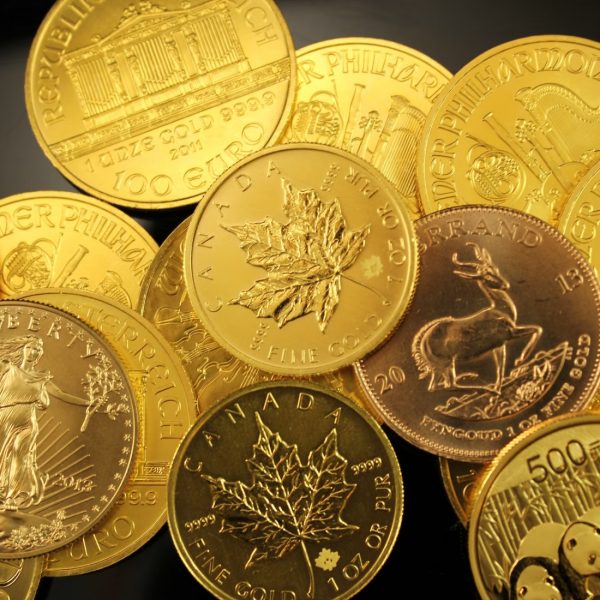Physical Gold versus Gold ETF
06/08/2023Daniel Fisher
Free & fully insured UK Delivery. Learn more
Secure & flexible payments. Learn more

Buyback Guarantee Learn more
ETF vs physical gold hinges on an investor’s needs. ETFs, traded on stock exchanges, offer ease of trade, cost-efficiency, and lower entry points, suitable for those seeking liquid and low-maintenance exposure to gold prices.
Physical gold, a tangible asset with no counterparty risk, is an excellent inflation hedge and offers potential tax advantages. It’s ideal for those seeking a long-term, stable investment and a wealth legacy. The choice depends on an investor’s risk tolerance, objectives, and preferences.
There’s an old saying – it’s not what you do; it’s the way that you do it! This holds true when it comes to gaining exposure to gold and silver. You have an array of investment options – the outcome, however, may be completely different from one to another. The most common ways individual investors engage with a gold investment are:
The choice will depend on your objectives, risk tolerance, and the current price of gold.
For instance, if you have a high appetite for risk, you might fancy your luck investing in a mining company where the performance of an individual mine can significantly impact your return on investment.
Alternatively, if you’re looking to actively trade the market, then electronic options such as ETFs or digital gold on online platforms are the most efficient way to achieve short-term speculation.
Now that you’re aware of all the benefits, you should also consider the potential risks that come with different investments.
The most potent benefit offered by gold and silver is balance and protection. Professional traders and everyday people buy gold and silver to hedge against inflation and REDUCE their overall risk. But that doesn’t mean that investing in gold is risk-free.
Electronic and paper options like ETF shares or gold-related assets expose investors to gold prices but also present additional counterparty risk. This can undermine the value of gold & silver as an inflation hedge or as portfolio insurance in the first place. Investment experience should also play a role in deciding which type of gold investment to opt for.
Riskier options like derivatives should be left alone by most people as they’re more suitable for experienced investors. If the market moves against you, the amount you lose isn’t just limited to your original investment due to leverage.
Risks specific to investing in gold coins and bars mainly relate to safeguarding. While keeping your gold coins at home is satisfying and provides direct control, it also exposes your investment to theft risk.
This danger can be reduced by keeping knowledge of ownership to yourself. Store your gold in a secure home safe, ensuring their value is insured or elect for professional vaults to minimise this risk completely.
The second risk is to unwittingly buy counterfeit gold. Unless you’re an expert, it can be difficult for investors to know if their gold is real. Always invest into physical gold products from well-known gold dealers with a track record, rather than buying from individuals from platforms like Ebay.
Investing in gold mining stocks requires substantial research. Not only do you need to understand the gold market itself and the price of gold, but also you’ll need to examine the underlying mining company, its structure, and the ability of its management.
The performance of each particular mining stock relies heavily on their fixed and variable cost structure and location. If the gold price falls but their costs (such as wages and fuel) increase, then some mines may have to operate at temporary losses or decide to halt production.
Going for a gold fund reduces the risk of depending on one mining company’s performance. However, your investment also depends on the quality and decision-making ability of the fund manager.
And remember, you’re still investing in a fund based on mining companies rather than gold itself. At the end of the day, your holdings in gold are represented by a piece of paper, not physical metal.
A gold exchange-traded fund (ETF) can be a better way of gaining exposure to gold itself, but it, too, has certain risks. The fund may be leveraged so that the amount invested into the ETF isn’t necessarily backed up by the equivalent quantities of gold in bullion.
This means that if sufficient holders of the gold ETF wished to sell their ETF shares simultaneously, there possibly wouldn’t be enough physical gold to satisfy all those sales.
Use our automated portfolio builder and see just how far your investment can go.
The cost of manufacturing gold coins and bars means the price per gram of gold you pay, is more expensive than simply buying unallocated gold electronically on brokerage firm platforms.
Don’t forget though, that the value of real gold coins can rise at a faster rate than the underlying gold price. If supply of these coins is limited or demand increases due to scarcity or collectability, then the coins can be sold at substantial premiums.
However, there are other costs to consider with ETFs and gold funds. These electronic means of ownership will have ongoing management fees to pay which can stack up over the years.
Physical Gold needs to be stored and insured, which costs money, although an increasing number of investors are taking personal possession of their coins and bars to store cheaply at home.
A major factor commonly overlooked is tax efficiency. Investment-grade gold is VAT-exempt, and certain gold coins are also Capital Gains Tax (CGT) free, making physical gold investment fully tax efficient.
For the few per cent extra you pay when buying, you may well be saving up to 28% later when you sell at a profit.
In 2024 and beyond, CGT is a prime target for the UK Government to raise taxes to reduce some of their furlough-induced debt. The two things you need to know for 2023/24 and upcoming years are:
Changes to the tax on capital gains are out of your control once you’ve invested in gold. Therefore, physical gold and silver coins are by far the safest way of providing long-term stability and remaining tax efficient.
They present the most secure method of protecting your family’s wealth tax-efficiently. Physical gold investment is also the most suitable way of passing wealth down the generations. Trust me, kids prefer to receive something tangible with real value, like real gold or physical assets, rather than a piece of paper promising worth. Thus, ounces of gold in the physical form, regardless of the purity of gold, can be a superior option for investors seeking an inflation hedge.


Live Gold Spot Price in Sterling. Gold is one of the densest of all metals. It is a good conductor of heat and electricity. It is also soft and the most malleable and ductile of the elements; an ounce (31.1 grams; gold is weighed in troy ounces) can be beaten out to 187 square feet (about 17 square metres) in extremely thin sheets called gold leaf.
Live Silver Spot Price in Sterling. Silver (Ag), chemical element, a white lustrous metal valued for its decorative beauty and electrical conductivity. Silver is located in Group 11 (Ib) and Period 5 of the periodic table, between copper (Period 4) and gold (Period 6), and its physical and chemical properties are intermediate between those two metals.